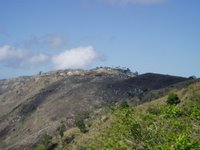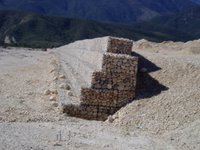18.475550° N 69.964880°W for those of you with Google Earth, or some other mapping software. I've been in the Dominican Republic for about 3 weeks. My time has focussed mostly on working with the staff here to develop our plans for the project in the border area between the DR and Haiti. This included a visit to the border to visit some communities and talk to some of the local leadership. Next week I am going to Haiti (hopefully) to do the same with our Haitian staff. (Since the election of Rene Preval as President, the situation there seems to have calmed down somewhat.) The border area is fascinating and complicated, and I think unique. It doesn't seem to be as much of a line as a wide band with open economic and social interchange between Dominicans and Haitians, and a gradual blending of cultures across the artificial marks drawn on maps. Many people on both sides (within this band) speak both Spanish and Haitian Creole, and there is a lot of intermarriage. Agriculture in the zone is also dependent on a close intertwining of the two cultures, with many Haitians share cropping on Dominican owned land. Understanding this relationship is going to be critical to our developing initiatives that will be appropriate for the region. At an organizational level, we will also be working together more closely as Haitians, Dominicans, and North Americans. This will be another big challenge, but our initial meetings of Floresta-Haiti, Floresta-DR, and Floresta-USA, have been very positive, and even in these planning stages, we are learning from each other. This is no small thing, considering the general feelings of hostility and discrimination that exist between the two cultures, and have existed for centuries.
Bob

Photo: Haitian girl on her way to market in a border town on the Haitian side, where goods are informally traded back and forth across international lines





